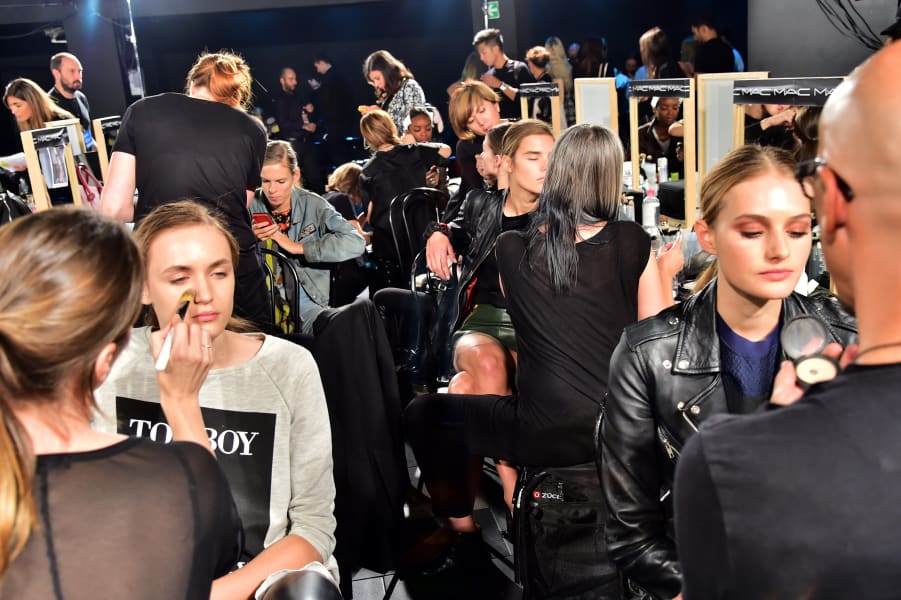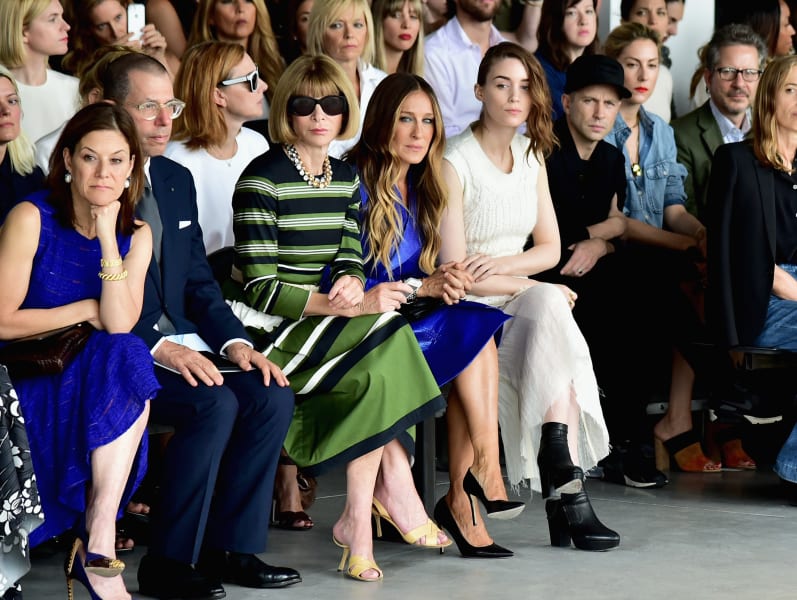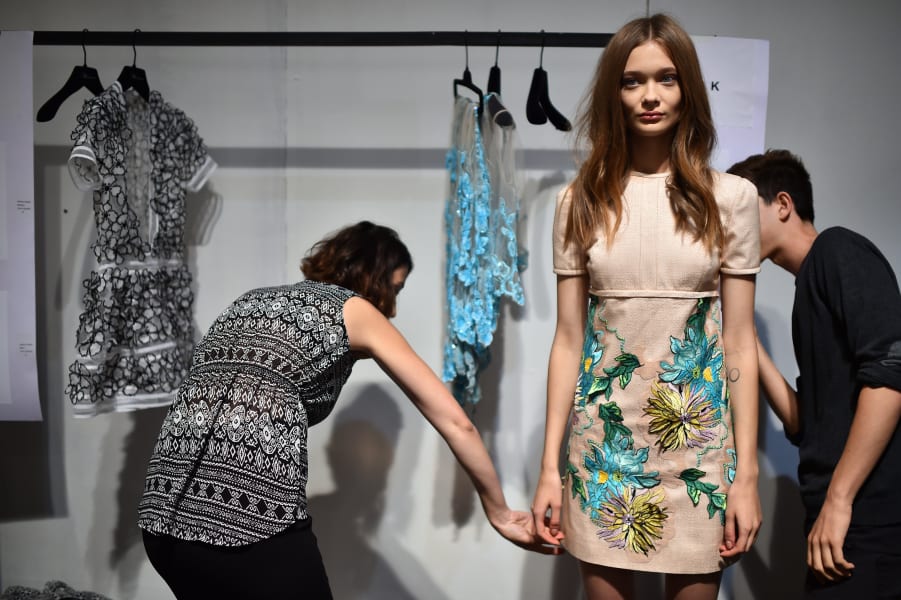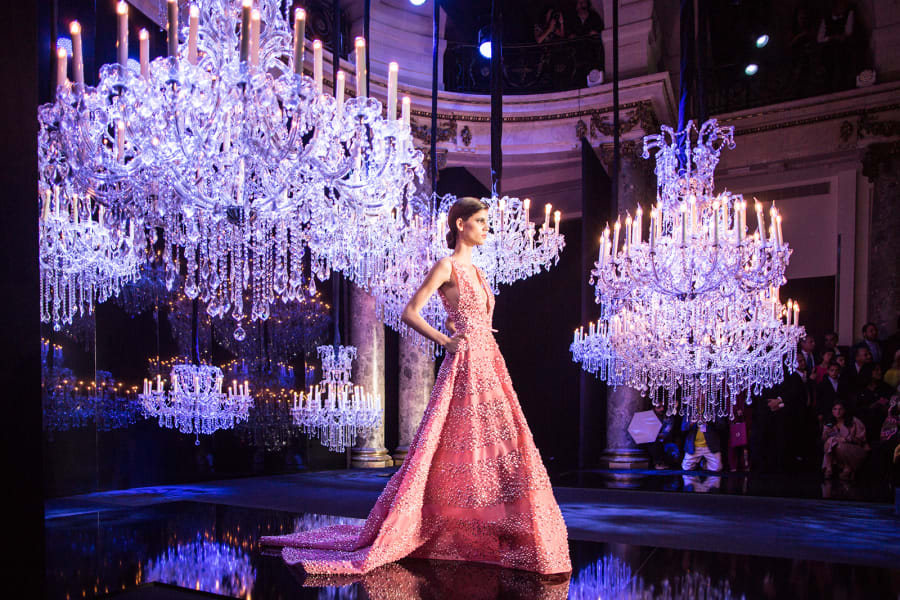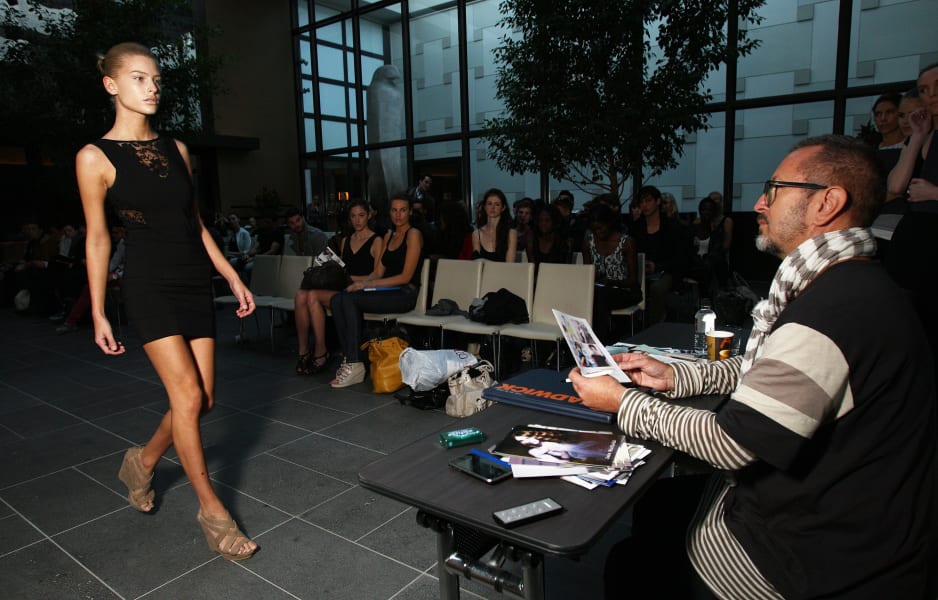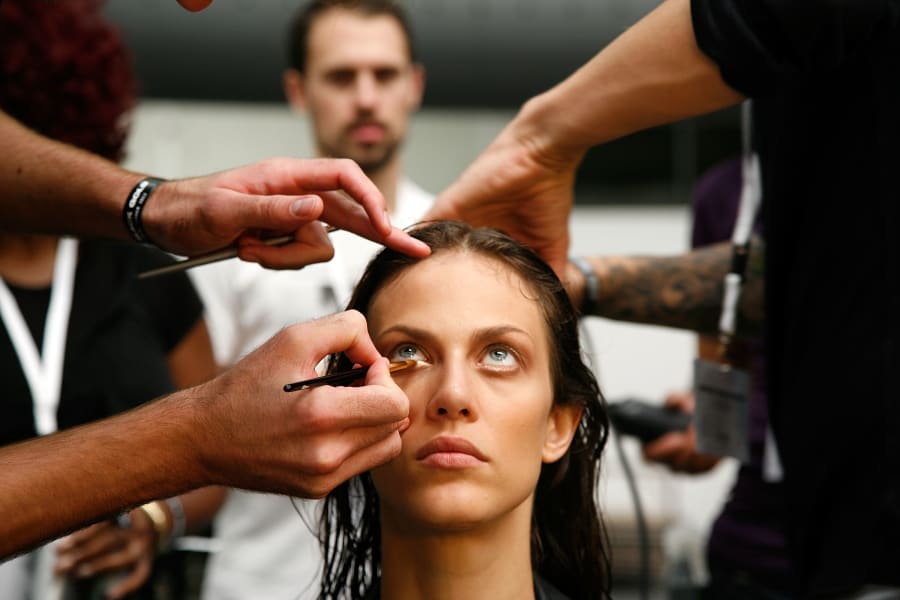Europe
Front-row politics, no-show models: What really goes backstage at a fashion show
Published 1159 GMT (1959 HKT) September 23, 2014
Share
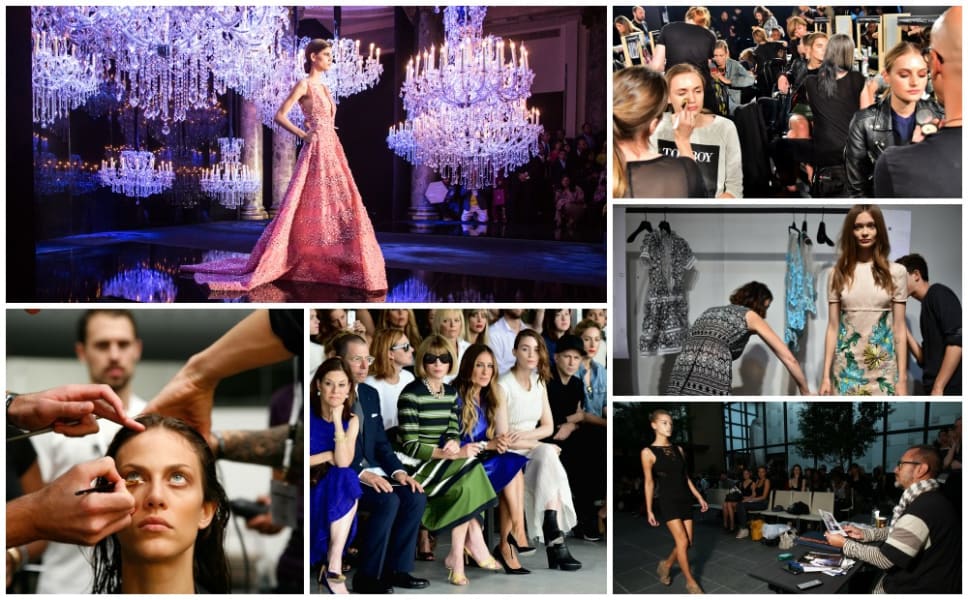

1 of 7
It all looks so smooth. Swan-like models glide down the catwalk clad in priceless frocks, perfectly executing their elegant choreography.
But behind these scenes of apparently effortless glamor, an unflappable squad of fashionistas does everything from last-minute garment alterations to replacing models who don't show up to finding a front row seat for a VIP who has turned up unannounced.
And when the designer's brief is a couple of words, something like "Ukrainian Virgin Brides in Snow Boots," as it famously was for John Galliano's Fall 2009 show, the pressure is on to deliver a 10-minute cinematic spectacle which often takes six-months to prepare.
CNN takes you behind the scenes of a fashion week runaway show, bringing you exclusive insights from the industry insiders who turn fashion fantasy into reality. Didi Abdelwaheb for OBO/GIUSEPPE CACACE/AFP/Getty Images/GABRIEL BOUYS/AFP/Getty Images/Andrew H. Walker/Getty Images for Mercedes-Benz Fashion Week/Graham Denholm/Getty Images/Andy Kropa/Getty Images
But behind these scenes of apparently effortless glamor, an unflappable squad of fashionistas does everything from last-minute garment alterations to replacing models who don't show up to finding a front row seat for a VIP who has turned up unannounced.
And when the designer's brief is a couple of words, something like "Ukrainian Virgin Brides in Snow Boots," as it famously was for John Galliano's Fall 2009 show, the pressure is on to deliver a 10-minute cinematic spectacle which often takes six-months to prepare.
CNN takes you behind the scenes of a fashion week runaway show, bringing you exclusive insights from the industry insiders who turn fashion fantasy into reality. Didi Abdelwaheb for OBO/GIUSEPPE CACACE/AFP/Getty Images/GABRIEL BOUYS/AFP/Getty Images/Andrew H. Walker/Getty Images for Mercedes-Benz Fashion Week/Graham Denholm/Getty Images/Andy Kropa/Getty Images
Creative producer
"Bauhaus cowboy." Those were the two words designer Phillip Lim gave to creative producer Rene Celestin as inspiration for his Menswear Fall/Winter 2014/15 show. Celestin, co-founder of OBO creative and production management group, interpreted his words with a spectacular set with austere architectural details which referenced the art movement, through which moody models in sharp tailoring sashayed.
"A fashion show is a strange animal because it's a professional presentation, most of the audience are press and buyers, but it's also a performance, and it gathers a whole myriad different specialist, from lighting to design, music editing and composing," says Celestin, whose company has also put on shows for the likes of Valentino, Ralph Lauren, and Elie Saab, pictured here.
"Producers are trusted to create the perspective and environment in which the brand and its collection will be seen," he adds. Didi Abdelwaheb for OBO
"Bauhaus cowboy." Those were the two words designer Phillip Lim gave to creative producer Rene Celestin as inspiration for his Menswear Fall/Winter 2014/15 show. Celestin, co-founder of OBO creative and production management group, interpreted his words with a spectacular set with austere architectural details which referenced the art movement, through which moody models in sharp tailoring sashayed.
"A fashion show is a strange animal because it's a professional presentation, most of the audience are press and buyers, but it's also a performance, and it gathers a whole myriad different specialist, from lighting to design, music editing and composing," says Celestin, whose company has also put on shows for the likes of Valentino, Ralph Lauren, and Elie Saab, pictured here.
"Producers are trusted to create the perspective and environment in which the brand and its collection will be seen," he adds. Didi Abdelwaheb for OBO
Casting director
From a sea of beautiful models, how do you select those who will embody the designer's vision on the catwalk, and showcase the clothes to maximum effect?
Russell Marsh, who spent 16 years as Prada's casting director and launched careers of top models Lara Stone and Daria Werbowy, says that designers often come to him because they already know his taste: "I've always gone for a slightly more androgynous, bourgeois look with an edge, not really obvious generic beauty," he says.
"Another thing which really separates a girl is how she puts herself together. A lot of the agencies tell models to wear black for castings, but I like to see personality shine through in the way they style themselves," says Marsh. He adds that many established models will only do a runway show if there is an advertising campaign attached to it.
From a sea of beautiful models, how do you select those who will embody the designer's vision on the catwalk, and showcase the clothes to maximum effect?
Russell Marsh, who spent 16 years as Prada's casting director and launched careers of top models Lara Stone and Daria Werbowy, says that designers often come to him because they already know his taste: "I've always gone for a slightly more androgynous, bourgeois look with an edge, not really obvious generic beauty," he says.
"Another thing which really separates a girl is how she puts herself together. A lot of the agencies tell models to wear black for castings, but I like to see personality shine through in the way they style themselves," says Marsh. He adds that many established models will only do a runway show if there is an advertising campaign attached to it.
Hair and makeup artists
With the fashion week schedule tightly packed, models crisscross the city rushing from show to show, having their faces repeatedly painted, scrubbed clean, and re-painted.
"One of the most stressful scenarios is when models arrive late from a previous show with greasy hair, covered in glitter, and they need their hair washed and redone and make up removed and reapplied in three minutes flat," makeup artist Lotten Holmqvist told i-D Magazine.
Hair gel is another minefield, as hair stylist Paul Hanlon found our when 15 models turned up late from a previous show sporting so much in their tresses it was impossible to comb through it: "We had no facilities to wash the model's hair," he told i-D, "so we literally had girls washing their hair with big bottles of Evian over dustbins."
With the fashion week schedule tightly packed, models crisscross the city rushing from show to show, having their faces repeatedly painted, scrubbed clean, and re-painted.
"One of the most stressful scenarios is when models arrive late from a previous show with greasy hair, covered in glitter, and they need their hair washed and redone and make up removed and reapplied in three minutes flat," makeup artist Lotten Holmqvist told i-D Magazine.
Hair gel is another minefield, as hair stylist Paul Hanlon found our when 15 models turned up late from a previous show sporting so much in their tresses it was impossible to comb through it: "We had no facilities to wash the model's hair," he told i-D, "so we literally had girls washing their hair with big bottles of Evian over dustbins."
Backstage manager
Behind the slick and polished exterior of a catwalk presentation there is a hive of activity, with well over a hundred models, hair and make-up artists, stylists, dressers and the press all packed backstage. This seemingly chaotic melee is organized by a backstage manager who supervises different crews, making sure everything flows efficiently.
"A manager will check a model in when she has arrived, push her through hair and makeup, dress her, rehearse her, get her in for hair and makeup retouching, and then send her down the catwalk," says Rene Celestin, founder of OBO, a creative production company which has backstage managers on its roster.
With an average of nine shows scheduled back to back during fashion week, models are often late, or cancel at the last minute because they get an offer from a bigger name: "A fashion show is a lot of unknowns," says Celestin, "and it will always change until it starts." GIUSEPPE CACACE/AFP/Getty Images
Behind the slick and polished exterior of a catwalk presentation there is a hive of activity, with well over a hundred models, hair and make-up artists, stylists, dressers and the press all packed backstage. This seemingly chaotic melee is organized by a backstage manager who supervises different crews, making sure everything flows efficiently.
"A manager will check a model in when she has arrived, push her through hair and makeup, dress her, rehearse her, get her in for hair and makeup retouching, and then send her down the catwalk," says Rene Celestin, founder of OBO, a creative production company which has backstage managers on its roster.
With an average of nine shows scheduled back to back during fashion week, models are often late, or cancel at the last minute because they get an offer from a bigger name: "A fashion show is a lot of unknowns," says Celestin, "and it will always change until it starts." GIUSEPPE CACACE/AFP/Getty Images
Publicist
Securing a VIP for the front row guarantees publicity for the designer, and personalities who occupy that prime spot attract as much attention as the clothes on show. "You want a front row with VIPs wearing the designer's clothing, especially people who you want to represent the brand in real life," says Mandie Erickson, head of New York-based Seventh House PR. An A-lister or a popular blogger wearing a designer's item can cause it to it sell out, so publicists scramble to get the most high-profile celebrities, fashion editors and it-girls, who guarantee column inches.
Sometimes celebrities turn up unannounced, often with a friend in tow, and it's up to the publicist to find a seat for them in the front row: "You have to ask people to scoot over or move, which can be very stressful," says Erickson. Andrew H. Walker/Getty Images for Mercedes-Benz Fashion Week
Securing a VIP for the front row guarantees publicity for the designer, and personalities who occupy that prime spot attract as much attention as the clothes on show. "You want a front row with VIPs wearing the designer's clothing, especially people who you want to represent the brand in real life," says Mandie Erickson, head of New York-based Seventh House PR. An A-lister or a popular blogger wearing a designer's item can cause it to it sell out, so publicists scramble to get the most high-profile celebrities, fashion editors and it-girls, who guarantee column inches.
Sometimes celebrities turn up unannounced, often with a friend in tow, and it's up to the publicist to find a seat for them in the front row: "You have to ask people to scoot over or move, which can be very stressful," says Erickson. Andrew H. Walker/Getty Images for Mercedes-Benz Fashion Week
Stylist
"My greatest fear is one of the models slipping or stumbling in her heels," says stylist Natalie Hubbard. When the runway is too slippery to negotiate safely, she resorts to scoring -- making incisions on the soles of shoes -- to make them have more grip.
Stylists help source the right footwear and accessories for the show, including underwear, but can sometimes be involved in the design process, and have an impact on how a collection develops.
They also decide which look best suits each model, which is done at fittings that often run into the early hours of the day of the show.
In those crucial few moments before the curtain is lifted, stylists are on hand to help with final checks, making sure that models are runway ready: "A fashion show is a real team effort," says Hubbard, "there's a lot of people involved in making it go well." GABRIEL BOUYS/AFP/Getty Images
"My greatest fear is one of the models slipping or stumbling in her heels," says stylist Natalie Hubbard. When the runway is too slippery to negotiate safely, she resorts to scoring -- making incisions on the soles of shoes -- to make them have more grip.
Stylists help source the right footwear and accessories for the show, including underwear, but can sometimes be involved in the design process, and have an impact on how a collection develops.
They also decide which look best suits each model, which is done at fittings that often run into the early hours of the day of the show.
In those crucial few moments before the curtain is lifted, stylists are on hand to help with final checks, making sure that models are runway ready: "A fashion show is a real team effort," says Hubbard, "there's a lot of people involved in making it go well." GABRIEL BOUYS/AFP/Getty Images
